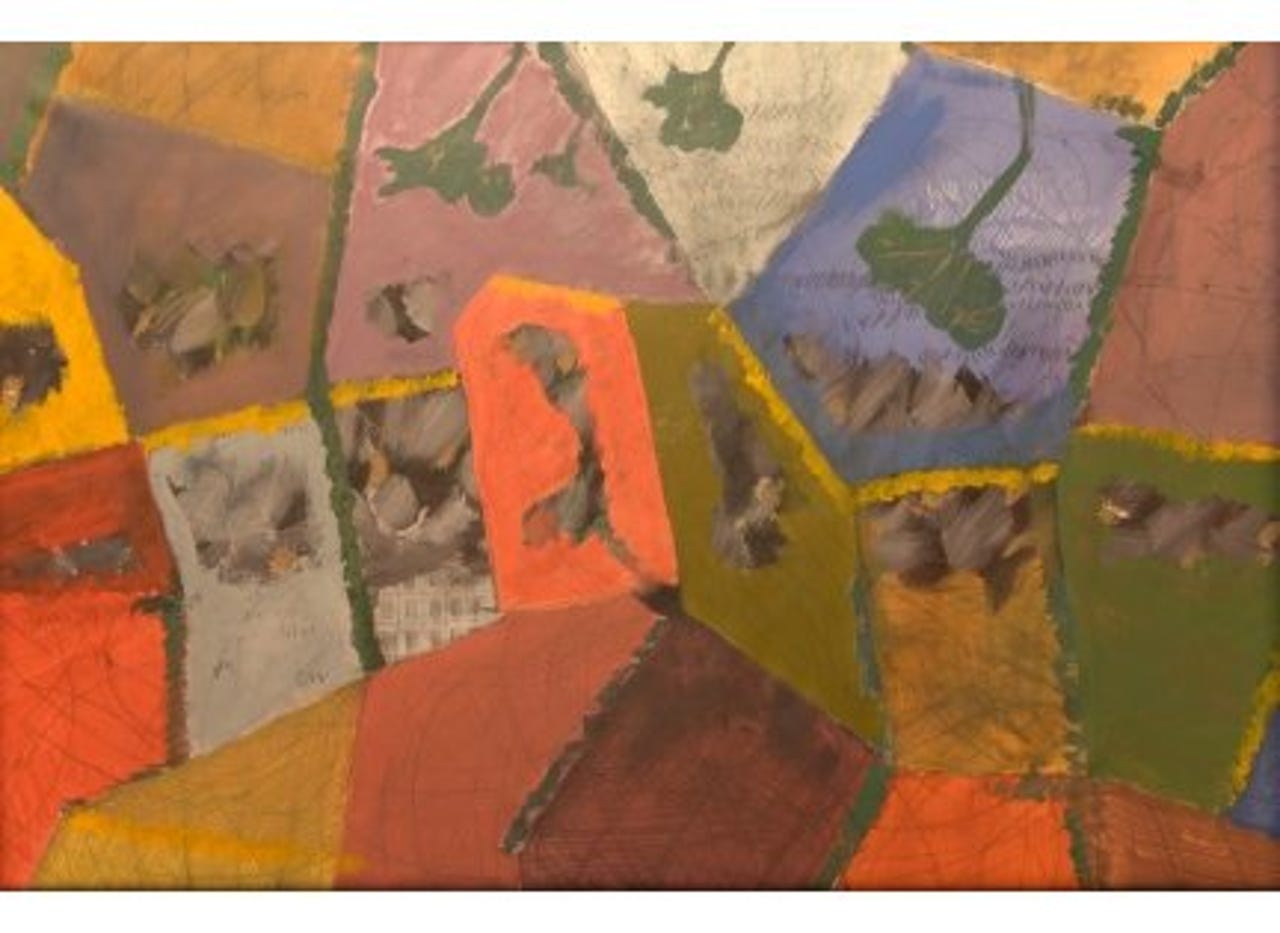Techies reveal their creative side for charity

In December last year, Microsoft began a competition asking IT professionals to come up with innovative technology projects to help a charity of their choosing.
Entrants, of course, had to use Microsoft technologies. The winner of the competition stood to see their chosen charity receive £15,000, so that the charity could implement the winning idea. To celebrate the creativity of the IT professionals' entries, artists created and exhibited art work inspired by the designs.
Over the next five pages are details and images (at the bottom of the page) of each of the five finalists' entries, together with the artistic interpretations (at the top of the page).
The winner of the DesignIT competition, as it was called, was James Elliott, whose entry was developed with a Birmingham charity for the homeless, St Basils, in mind.
Elliott observed that homeless people have to carry most of their possessions with them. Having access to an online repository for personal documents and records seemed like a logical answer, culminating in Elliott's winning 'Virtual Rucksack' concept.
"My design will provide tangible benefits to the services that St Basils is able to provide. IT people are able to deliver real insight when they work on genuine business problems," said Elliott.
For St Basils, the system will provide a digital record of an individual's case history and, eventually, other organisations will be able to link into the system to provide additional support services, according to Microsoft.
James Elliott's Virtual Rucksack was interpreted by Ross Garth, an accountant and amateur artist. "I started off creating a picture of a tool belt, with a simplicity inspired by the need to get a clear message to youth," said Garth. "I also created a belt that relates to dangerous items which the youth could previously have been involved with during a homeless period. These two images were then used as a repetitive design to present a 'before' and 'after' image."
Another one of the five finalists was Bill Ayers, whose entry — the Lean, Green, Wind-powered IT machine — was based on the concept of wind-powered remote working, using a 1kW turbine to power a server running Windows Small Business Server.
Email is provided by Exchange and Outlook using Cached Exchange Mode, which Ayers claimed is tolerant of intermittent connectivity — something to be expected when using wind as a power source.
Ayers's project was also interpreted by Ross Garth:
"A picture, displaying the four elements (wind/air, earth, fire and water), is combined with IT 'elements'. This shows the correlation between nature and technology. The picture portrays a combination of production, destruction and the interaction of humans," said Garth.
Finalist Johnson Manuel Devadoss developed an automatically updated screensaver for the Devalois children charity, which provides information on missing children. The 'Missing Kid Saver' runs photos of children, as well as contact details in case of a sighting, as the screensaver on the PC of anyone who signs up for it.
The Missing Kid Saver was interpreted by Sian Murphy, an artist and a ballerina with the Royal Ballet company.
"My work has always been concerned with the dislocation of what we see and the actual reality behind things, especially the pain behind the fantasy of childhood hopes and dreams and the real events that life actually imposes," said Murphy.
"In my own profession as a classical dancer, the general public perceives a choreography that seems beautiful and effortless, yet the experience of creating the performance is one of constant pain, blood and sweat; the razors of the tiara, the bloodstains of the points. And yet, paradoxically, it is a labour of love," Murphy added.

Conservation charity Fauna & Flora International provided the inspiration for Jyoti Majithia's entry. 'EcoSpaces' is essentially a web presence for the charity that can be updated using a mobile device.
Fixed internet access is rare in the developing world, but mobile connectivity is much more plentiful. Experts in the wild often don't have the equipment to send emails or update sites online, according to Majithia, so sending information back by mobile makes much more sense.
The artistic interpretation of the Ecospaces entry was the work of Paul Gabriel, who is employed in retail.
"The painting addresses the ecological issues of today. The juxtaposition of various landscape vignettes alludes to the contradiction we see in everyday life. A thriving landscape may be viewed at one moment, only to see a scarred wasteland the next. Beauty exists within minutes of tragic [despoilment]. Is ecological devastation as imminent as we're told? Why do we find landscapes that contradict the prophecy?" Gabriel said.
The People's Trust for Endangered Species is a conservation charity, created in 1977, with a special focus on UK mammals. Martin Newman's entry, 'Mapping our Changing Wildlife', proposed a system to allow "citizen scientists" to input information about mammals killed on roads, using mobile devices or PCs.
The system uses the "spatial-analysis capabilities of SQL Server 2008" and mapping technologies, such as LiveMaps, to track where and when mammals are being killed on Britain's roads.
Mapping our Changing Wildlife was interpreted by Andrea Smith, a trainee art therapist.
"My idea around this project was really to try and emphasise the surveillance data through an interwoven map. I wanted to try and show the diversity of the many hours of tracking across a wide spectrum, each string recording and sending a piece of data that entwines to give a three-dimensional image of the hours put in. I wanted to create a simple analysis of something that is both spatially interactive and conveys the multitude of data collection," Smith said.